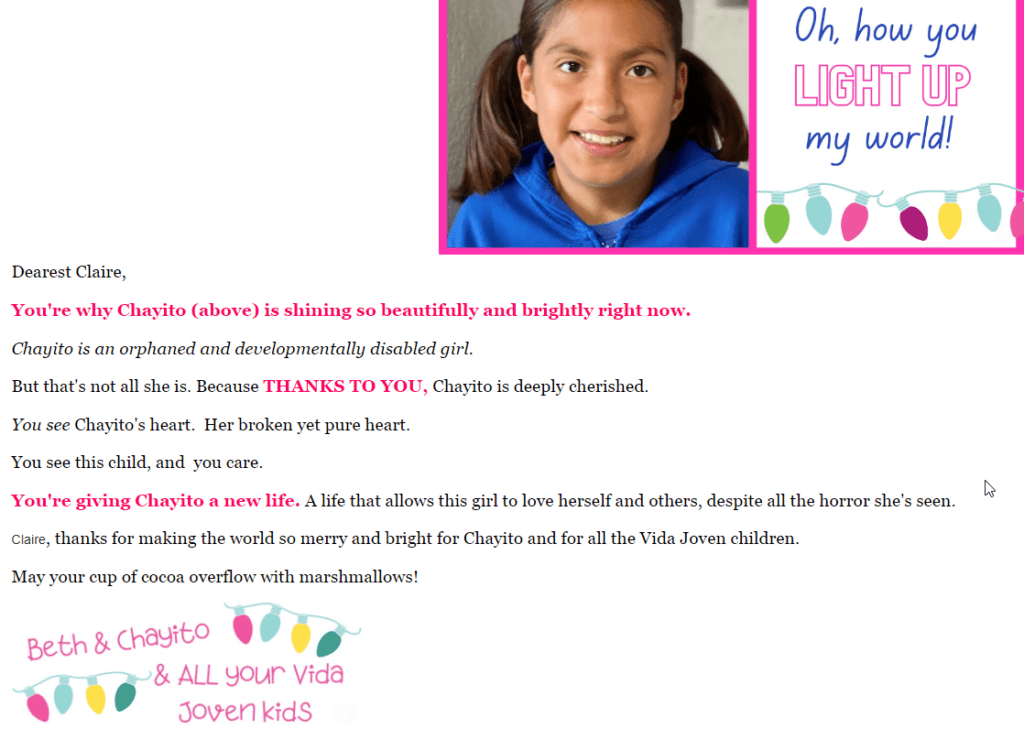Consider these tips your New Year’s Resolutions. They’re simple to accomplish, relatively inexpensive, and they’ll give your fundraising program a big boost in the coming year.
As the folks at Nike would say: JUST DO IT!
Tip One: Correct Your Bad Addresses
Give donors the gift of reconnection!
Did you know in the U.S., at any point in time, on average 5%-7% of your database is undeliverable? Over a four-year period 30 to 40% of people in your database will have changed addresses or died. Some folks will let you know when they move, but a majority will get busy and neglect to do so; you’ll fall off their radar. Do you really want to lose your ability to communicate with these supporters? Absolutely not! These are folks who know you and at some point told you they wanted to connect with you.
Don’t let your donors wander away by failing to take this simple action: Run a National Change Of Address (NCOA) update. Roger Craver of the Agitator-DonorVoice estimates this will yield a revenue boost of 5%-7%. If you raised $100,000 last year, this will get you an extra $5,000. Raised $1 million? This will yield an extra $50,000! No arguments, this is well worth your investment. [Estimated cost: $20 max through TrueNCOA regardless of the size of your donor file; estimated time: 1 hour].
NOTE: Make it policy to clean up your database at least annually, and more if you have a big list and/or mail frequently. Sending mail to undeliverable addresses is expensive and a waste of resources. Some donor databases offer built-in data stewardship updates [e.g. Bloomerang does this nightly, scanning and updating all U.S. addresses for updates, deceased information (when applicable), and some optional demographic information.]. Check with your provider to see what’s offered, and consider this a feature to look for if you’re in the market for a new database.
TIP TWO: Remove Deceased Donors
Avoid sending embarrassing or triggering mail!
Penelope Burk’s groundbreaking Donor-Centered Fundraising research found a key thing donors want is for you to “show them you know them.” When you send lapsed donor reminders to people who are deceased, you fail big time in this regard. You don’t make grieving family members feel very good either. Can you imagine how you, and your donor, would feel if you called to ask for a major gift by beginning with the common “So, how is your other half doing?” only to learn they’d passed away six months ago? They’ll think, if you know them as you should, you should have known that.
Don’t unnecessarily make donors feel bad by failing to take this simple action: Run a deceased donor update to identify people in your file who’ve passed away. [Estimated Cost: $50 max through TrueDeceased, regardless of the size of your donor file; estimated time: 1 hour.]
TIP THREE: Keep Your New Donors
Show genuine, prompt, personal and powerful gratitude – and keep it coming!
There is nothing that boosts retention more than a thoughtful thank you. But it can’t be just a pro forma automated message or formal mailed receipt. When Penelope Burk’s Donor-Centered Fundraising research first came out two decades ago (it’s been repeated numerous times since), I was bowled over by the primary finding that if nonprofits did just three things donors would likely give again. Or give more. What was this holy trinity?
Don’t ignore the “3 ‘P’s” of donor gratitude:
I write dozens of posts annually on the power of thank you (e.g., see here, here, here and here for just a few), and will continue to do so until donor retention rates start to rise. Alas, they’ve been plummeting for over a decade per Fundraising Effectiveness Project (FEP) reports – and I truly believe it’s because most nonprofits don’t put real energy into developing and carefully implementing a written Donor Love and Loyalty Plan. Make this the year you do this – in spades! And please send heartfelt, genuine thank you’s that make donors feel good. Here’s an example I just received from Vida Joven that rocks it out of the park:

NOTE: If you get a second gift from a donor the chance you’ll get another jumps from 19% to 61% per FEP research. And the best way to get that second gift is to thank well. A ‘gratitude program’ is more than simply saying “thank you” once; then ignoring the donor until your next appeal. You need to plan a cycle of communications. Begin with your prompt personal thank you for their year-end gift; then get rid of all your excuses for not letting folks know their gift was appreciated more than just that one time. “Cut the crap” and consider other ways to demonstrate gratitude throughout the year.
Research shows for gratitude to really be effective it must be repeated. Across multiple channels in multiple ways. This will make your donor feel loved. When we’re loved, we’re likely to return the favor.
RESOLVE to make donor retention a priority.
Really! if you want to survive and thrive in today’s competitive nonprofit marketplace, there’s no better New Year’s resolution.
There are fewer and fewer new donors. So you absolutely must love the ones you’re with!
It’s not hard, it’s just work.
Work you want to do intelligently, according to a plan.
To paraphrase Lewis Carroll in Alice in Wonderland: “If you don’t know where you’re going, any road will get you there.” Or not.
Are you currently going the “or not” route? Sadly, if your donor hygiene and retention strategies are catch-as-catch-can, you are headed to nowhere.
If I can help you do better, don’t hesitate to reach out. You may find this guide useful: How to Cultivate an Attitude of Gratitude and Keep Your Donors.